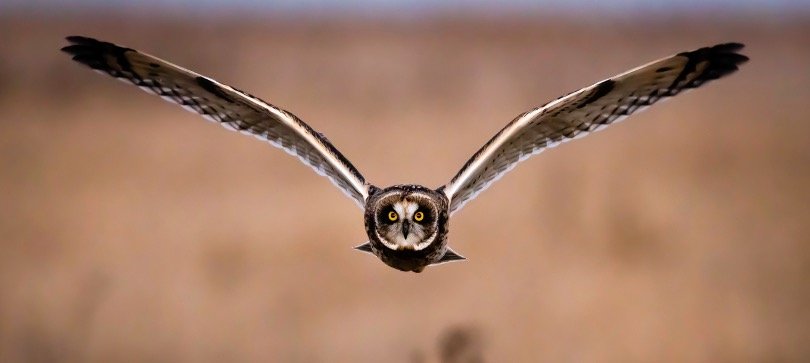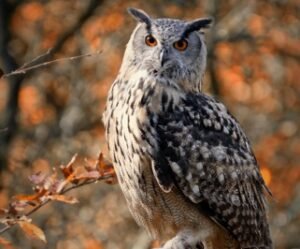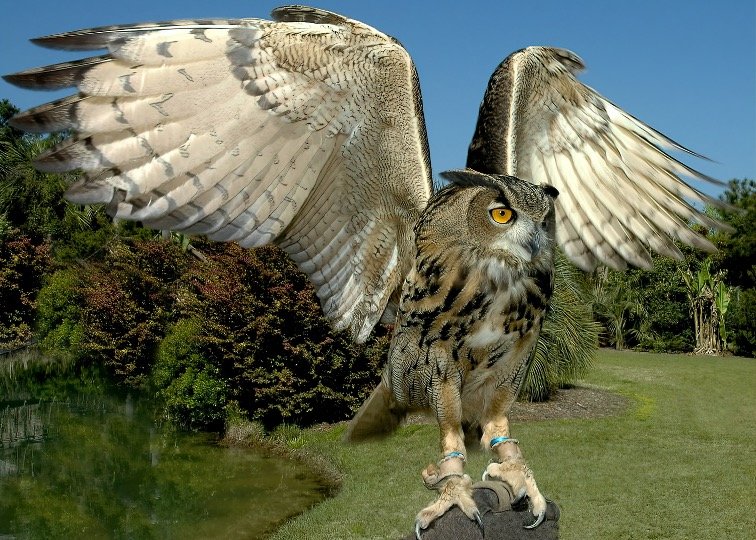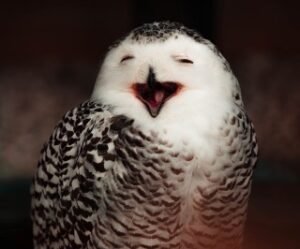
Where Do Owls Go During The Day?
I, like many other birdwatchers, have frequently wondered where owls go throughout the day, precisely, where would owls go during day? So I went out to investigate this subject, and I’m here to share what I discovered with you.
While there are owls who hunt throughout the day, the majority of them sleep and relax after a night of hunting. They retreat to their resting location, which is known as a roost.
Some owls may roost solitary, while others may roost in groups. An owl can also locate a mate through roosting. That, I realise, is insufficient. Continue reading to find out more.

Where Do Owls Hang Out?
The location of an owl’s roost dependent on the type of owl. Certain owls, in particular, will rest on tree branches nearby their hunting areas so that they may hunt as soon as they leave the roost. Barn owls, for instance, have indeed been roosting in a variety of rural structures and tree hollows.
Burrowing owls do precisely what their name implies. Owls will want dense old trees with strong trunks while seeking for cover. The nocturnal owls like trees that are shaded during the day.
If they can’t locate a suitable tree to sleep in, nesting boxes are a nice option. Owls often roost alone; please see the list of live owl cameras to view some roosting behaviours here. Even though some species roost together over a variety of reasons, such as:
• So that they may keep one another warm.
• To locate a partner when mating season arrives.
• To tell others where the best hunting sites are.
• Keep an eye out for predators.

Although owls may be found in a variety of habitats, the woods are not the only location to look. There are numerous owl species that roost in cities. They are lured to the city because of the plethora of cuisine options available.
Owls look for rodents, sparrows, and other tiny creatures on which to feast. Owls can also be found roosting in an owl nesting home. See our post on the finest owl nesting boxes for more information.
They enjoy roosting in the large ancient trees that line the parks and streets in our communities. Owls nesting on light poles as well as utility poles are not rare. But don’t assume for a moment that all these owls are resting or dormant during the day.
Even while they are roosting, they are always on the lookout for predators. When they detect movement, they would open their eyes, turn their heads, and fly away.

You may also like to read; Can Snowy Owl Be Kept As Pet? Everything You Need To Know
Are All Owls Truly Nocturnal?
The term “Night Owl” causes several misunderstandings regarding owls. Most people, like me, believe that when the moon shines, all owls become active. That, although, is not really the case. Nocturnal owls, Diurnal owls, and Crepuscular owls are the three categories of owls depending on their sleeping patterns.
• The most prominent being nocturnal owls. They are really the ones who are most active at night. They hunt and go about their regular lives at night. Throughout the day, you can spot them snoozing on a limb or roosting elsewhere.
• Diurnal owls are the inverse. They are by far the most active owls throughout the day. They, like other animals, sleep and replenish their batteries at night.
• Crepuscular owls are also those who spend the majority of their time awake between twilight and morning. They hunt both during the day and at night.
While the majority of owls are indeed nocturnal, there are two species that are really diurnal.
1. Northern Hawk Owls:
Northern hawk owls may be found in the far north of North America and Asia. They are capable of hunting in the same way that haws and falcons are. They are persistent hunters sitting high in the trees, waiting for food. They may also hunt in the winter, hunting animals that are buried beneath the snow. They can even seize prey in mid-air if necessary.
2. Northern Pygmy Owls:
These are more frequent on the west coast of North America. Most visible throughout the day, specifically whenever the sky is cloudy. At the very tops of trees, they may be seen swaying their heads and twirling their tails. They, too, have hunting abilities similar to hawks and falcons. They can put up a fight with northern hawk owls.
Crepuscular owls include Snowy owls, Short-eared owls, Burrowing owls, Great grey owls, and Great horned owls. According to study, 69 percent of owls are nocturnal, 22 percent are tenebrific, and only 3 percent are diurnal. Despite this fact, owls are still classified as nocturnal creatures.

Nocturnal, Diurnal, and Crepuscular Owls?
There is one guaranteed technique to determine if an owl is nocturnal, diurnal, or crepuscular. All you have to do is stare into an owl’s eyes.
1. Dark-eyed Owls:
Owls with black eyes are nocturnal creatures. They love to hunt at night and can capture their prey in complete darkness. Their eyes do not assist them view their prey, but they are camouflaged in the dark. Seeing an owl with black eyes during the day is a once-in-a-lifetime opportunity that should be savoured. Barn owls, Barred owls, and Northern spotted owls are examples of owls having dark eyes.
2. Orange-eyed Owls:
Crepuscular owls have orange eyes. The twilight owls are what they’re called. They love to seek their prey in the early morning light. Orange-eyed owls include Eurasian eagle-owls and Great horned owls.
3. Yellow-eyed Owls:
Look for golden eyes if you’re looking for owls during the day. They love to hunt while the sun is shining. They have superb vision, but they depend on their listening to find their prey underneath the snow. They are among the most hardy owl species. Burrowing owls, Great grey owls, and Snowy owls are examples of owl species.

How To Find Owls? Tips & Tricks to Find Owls
Owls are notoriously difficult to locate. This is due to their preference for seclusion. They dislike being bothered by the noises that people create. Hence, here are some things to keep in mind when looking for owls: The ideal time to see an owl is around dusk.
Facing the sky where the sun is sinking and search for the owl’s silhouette. Pellets can be used to determine where the owls roost. The pellets are ejected by owls. These are the prey’s bones and tissues, which their bodies are unable to digest.
There are owls roosting when there are pellets on the ground. Go to the place where the food is. If you identify where smaller species congregate, you can almost always find an owl sitting high up on a tree, ready to attack.
Cemeteries are a great site to see owls. They have all of the owl’s needs and are known to be visited by them. Keep in mind, though, to respect individuals who are in grief in that region.
Continue to hone your night vision. It is usual to not see any owls on your first owling trip. The more you practise, the better you will get. Also, consider luring owls to your own property.








